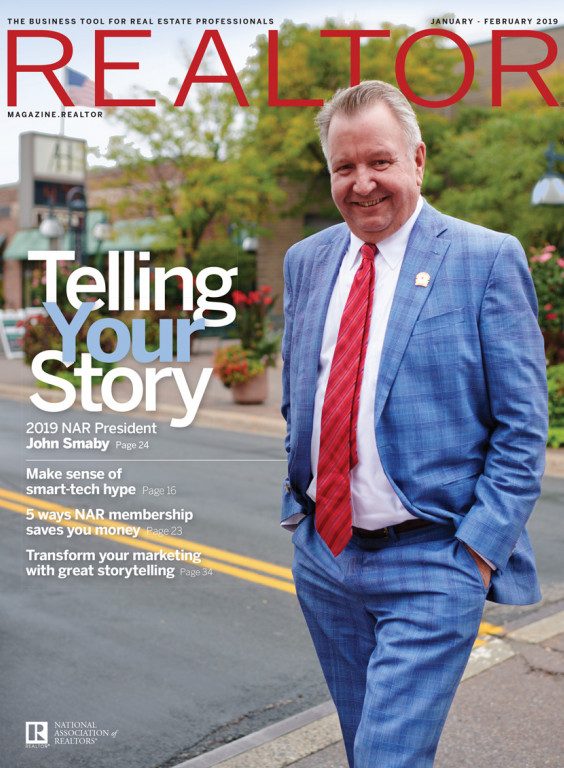Smart choices are coming almost faster than you can say, “Alexa, please start the coffee.” Whether it’s Amazon’s virtual voice assistant obeying verbal commands, Google’s Nest Cam Indoor camera letting concerned relatives know grandma got safely out of bed, or Philips Hue’s smart lightbulbs altering a room’s ambience with the tap of a smartphone button, these products are changing how we now live in our homes.
The flood of new technology is tempting but there are drawbacks. Some are quite costly—both in terms of price and demands on existing Wi-Fi systems. Also, new devices may quickly make existing ones obsolete, increase the potential for hacking, and be more complicated to operate for those who are less tach savvy. Homeowners must understand the importance of choosing an adequate infrastructure, including the control system platform, network, wiring, and power requirements, so their numerous devices can function simultaneously and work compatibly.
Some smart products sound like the greatest invention to improve daily life but turn out to be much less useful in reality. One case in point: Quirky’s “Egg Minder” and “Wink” app informed users on their smartphones how many eggs were left in an egg tray and which would expire first. It never caught on, and the company filed for bankruptcy.
Glenn S. Phillips, CEO of Lake Homes Realty, a brokerage in Birmingham, Ala., thinks “a lot [of these products] are just cool novelties that will appeal to the early adopters who like to impress their friends.” One example he cites is multicolored, changeable high-tech lighting: “Most homes are not nightclubs, and I believe the novelty wears out fast.”
With the explosion of meal kits, cooking gadgets, and amateur chef TV shows, the kitchen may seem like a room ripe for smart-home disruption. But there’s a lot of hype there, too. Moley Robotics’ smartphone-controlled robot chef has hands fitted with 24 motors and 129 sensors to prep food. But commercial interior designer Mary Cook, founder of Mary Cook Associates in Chicago, is skeptical of the product’s reach. “It seems far-fetched at this time,” she says, adding that its skills are limited. It can’t yet grocery shop, set out ingredients, or prepare much more than crab bisque. But kitchen design guru Mick De Giulio of De Giulio Kitchen Design in Winnetka, Ill., thinks another reason kitchen tech might not catch on is that many homeowners still enjoy the cooking process, since it involves “making things with our hands, which is primal and therapeutic.” He says that possibly down the road “wild concepts” like a cooking robot may be popular, but it’s hard to predict what will land. “I think of Steve Jobs’ quote, ‘Our job is to figure out what they’re going to want before they do.’”
Kitchen equipment with a name brand, however, gives consumers more confidence, says salesperson Rick Gehrke of RE/MAX Executives in Boise, Idaho. He puts Jenn-Aire’s wall ovens in that category but isn’t sure how quickly the company’s Wi-Fi–enabled models will catch on in his area. “We haven’t yet found the buying public that will think a Wi-Fi cooking feature is enough inducement to pick one product over another,” he says. The technology makes recommendations on how to cook certain dishes based on variables such as the cut of meat, type of pan used, and recipes from its Yummly recipe app.
Gehrke’s still working to separate hype from help, but he’s found a few smart-home products that make good closing gifts. “As I get to know a client, I home in on what they might view as a practical, appreciated gift. Lately, the Ring Video Doorbell has been a good choice,” he says. “People like the technological aspect of having a 24/7 security feature on their cell phone, so it doesn’t matter where they are. The ring activates the phone, and they can hear and see who’s there. It’s been well-received.”
In certain regions, smart-home tech can make a listing stand out. “The technology seems to help sell listings by differentiating them, especially for millennial buyers, who often ask me what tech’s included?” says salesperson Stephanie Mallios with Coldwell Banker in Short Hills, N.J. A smart home may eventually be considered a basic necessity as their number triples to 73 million, or more than 50 percent of all households, by 2021, according to MarketWatch.
Here are three ways you can help your clients sort through the increasingly crowded smart-home market.
Use These Three Product Categories to Determine Usefulness
Many experts sort smart-home devices into three categories—convenience, energy savings, and safety. The key is to understand what matters most to each client, so you can help them prioritize. “Some want the devices to help them save money; others may be socially conscious and want to leave less of an environmental footprint; and some, especially seniors, may seek a digital companion,” says interior designer Cook.
1. Convenience. Products that offer efficiency and time savings have huge appeal, says Jennifer Castenson, director of thought leadership content at Hanley Wood, a real estate publisher in Washington, D.C. Convenience means everything from allowing a pet sitter to open a smart lock remotely or providing package deliverers the option to leave boxes safely in a garage to upgrading manual light switches to allow users to shut off all lights at night with one command. For those not yet ready to make a total segue, KeyHero offers a mobile app that lets home owners create a digital spare key that they save on their smartphone. If locked out of their home, they can trade the digital version in for a physical one cut at Home Depot.
2. Energy savings. New ways to save money on heating and cooling are always in demand. Apps now exist for everything from monitoring a home’s carbon footprint to suggesting how homeowners can become “climate warriors.”). Danny Hertzberg, a salesperson with Coldwell Banker’s The Jills team in Miami, is looking forward to seeing Tesla’s solar panels come onto the consumer market. These promise streamlined roof designs and have an app to track the power they generate. “It’s going to be a game changer,” he says. Even gasoline use and driving can be reduced with the emergence of diagnostic tools built into equipment to save homeowners and repair workers trips to secure the right part.
For example, Samsung’s FlexWash energy-saving equipment also has SmartCare intelligence, which alerts a homeowner or building staff that it’s not working. They can troubleshoot from their smartphone and share with the repair service so an employee brings the correct parts the first time rather than after multiple trips, says Felicite Moorman, CEO of Stratis in Philadelphia, which developed a smart platform for multifamily and student housing rental property managers.
3. Safety. Many new products and apps offer homeowners greater peace of mind, whether it’s by automatically unlocking smart locks when a smoke alarm is triggered or offering smartphone video of who’s ringing the doorbell. But here’s a caveat: Homeowners should be vigilant about protecting their systems to keep hackers from being able to open doors or trigger false alarms, according to an article in MarketWatch. They should, among other actions, be sure to change default passwords on smart-home technology and Wi-Fi networks to make them more difficult to hack.
Keep an Eye on the New-Home Market
Both multifamily developers and single-family builders have noted increased interest in homes equipped with technology, to the point that it’s become the latest weapon in the amenity war. The most forward-thinking companies install proper infrastructure to handle the power and connectivity load.
The Mason—a 95-unit transit-oriented rental building in suburban New York constructed by Halpern Real Estate Ventures—includes the smartphone Latch keyless door system, ButterflyMX two-way video intercom, Amazon’s The Hub locker delivery system, and Fitness on Demand’s virtual workouts on its exercise equipment. “All these elements help lease apartments faster and provide an elevated, convenient lifestyle for residents,” says real estate broker Angela Ferrara, whose firm The Marketing Directors is leasing the building and already has a wait list. Her company is also working on retrofitting a 1910 building with today’s technology. “We’re struggling with how to add smart features and not break the bank,” she says.
Lennar Corp., the country’s largest single-family builder, became the first to embrace the Wi-Fi Certified Home Design program developed by the Wi-Fi Alliance, a group of companies working to increase wireless adoption globally. Lennar has already incorporated this design into all its new-home communities. “We understand that we live in a wireless world, and this provides the infrastructure for the smart devices we’ve included to work together to help improve buyers’ lives,” says Danielle Tocco, Lennar’s vice president of communications. Homes are equipped with a commercial-strength Ruckus Unleashed wireless system so there are no dead spots. The company also offers “white glove” service, with an Amazon expert coming to help buyers become acclimated to the technology and personalize their systems, Tocco says. For instance, after a homeowner says, “Alexa, good morning,” the voice assistant can provide a flash briefing from a favorite news outlet with weather and traffic updates.
Get to Know Your Local Home-Automation Specialist
Clients may soon ask you for a list of skilled smart-home tech installers. Known in the industry as “custom integrators,” this breed of home helper typically designs a detailed plan of desired features—perhaps for a room or entire house—prices the project, and trains clients how to use the new items, says Jarmila Kajuch Singer, who works with her husband Gary at Sound Living, their firm in Barrington, Ill. “No two projects are the same with high-end custom residential work,” she says. These experts can help homeowners understand what type of protocol to use to connect these systems, whether it’s an existing Wi-Fi network, Z-Wave, Zigbee, or a proprietary one. They can also help your clients determine how they want their devices to operate—with voice activation, a smartphone app, or both.
Custom integrators can help make devices work together seamlessly and speak the same language, especially as new products emerge, and companies do their best to integrate them with those homeowners already have. For instance, Jenn-Aire’s Wi-Fi ovens are able to tell Google’s Nest smart thermostats to lower a home’s temperature when ovens are on so rooms don’t get too warm. In fact, Nest’s website has a section listing what “works with Nest.” Nexia’s bridge is compatible with smart Trane thermostats, Schlage door locks, and Pella garage sensors. And Deako smart light switches take commands from an Amazon Echo or Google Home.
Integrators can also consolidate apps into one to save homeowners time scrolling through dozens on their smartphone. “It’s no different from how numerous remote controls once were needed until they were consolidated into one to avoid searching through a pile on their coffee table,” says custom integrator Brian Perreault, COO at Barrett’s Technology Solutions in Naperville, Ill.
Whatever choices your clients make, suggest they periodically assess whether they achieve their desired results, such as feeling safer or more rested, says Chicagoan Nancy Rothstein, director of Circadian corporate sleep programs for The Sleep Ambassador. Some quality of life issues simply cannot be improved through technology either. Afterall, staring at a phone before bed never helped anyone get a better night’s sleep, she noted. If a gadget promises a solution to a problem you didn’t know you had, it may be best to say, ‘no thanks.’














